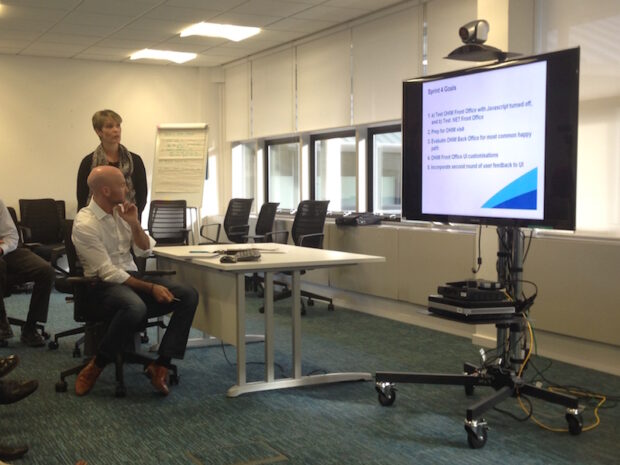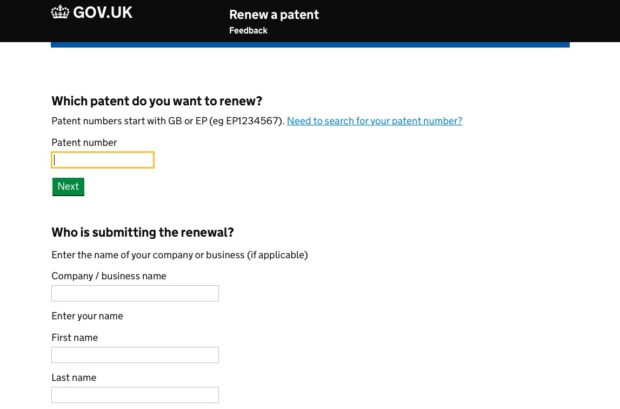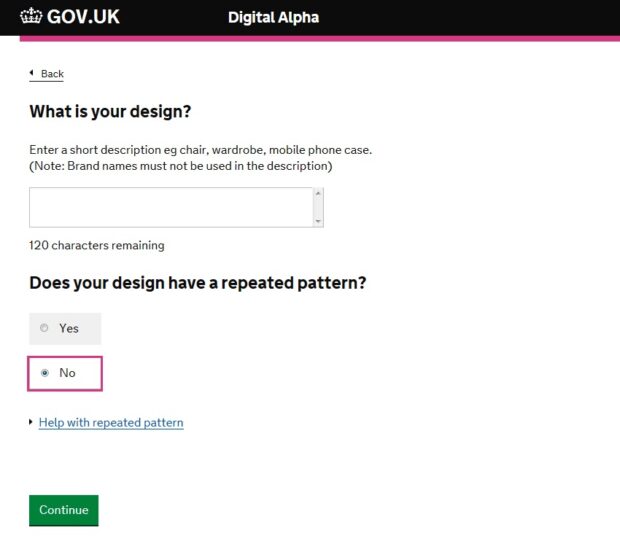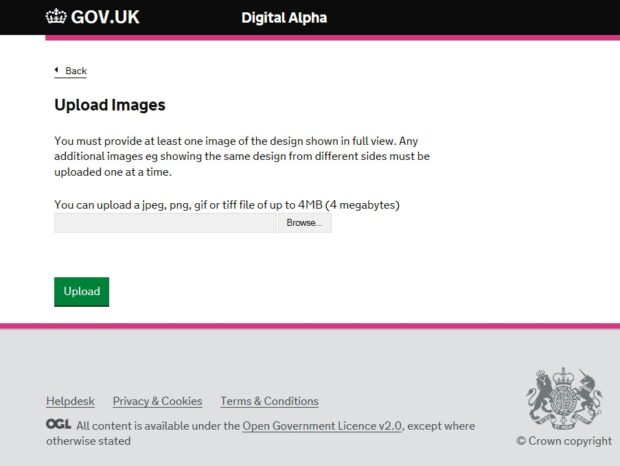
Lots of my blog posts in recent months have included a bit of moaning about failure waste - problems created by poorly-designed services, most of them decades old and paper-heavy, that leave their users with nothing but questions.
The organisations running those services find themselves in a state of learnt helplessness: after decades of outsourcing, they’re stuck with technology they can’t change. Even when they know exactly what sort of digital transformation they want to bring about, they don’t know how to start.
The users, unsure about what they should do next, usually resort to picking up the phone and asking for help.
Of course we should provide help for people who need it - that's at the heart of our assisted digital strategy - but we should also re-design public services to make them so simple that most people won't need any help. That's what we mean by digital by default. It’s far, far cheaper and more efficient for government to provide services digitally than over the phone, so if digital services are successful we end up saving money for the government and for taxpayers. It’s common sense.

Newport in South Wales is the home of the Intellectual Property Office (IPO), the organisation that looks after patents, trade marks, designs and copyright in the UK. They aim to help people and businesses get the right kind of legal protection for their creations and inventions. The rules surrounding IP are complicated and international in scope; helping people get their heads around it all is an important part of the job.
In recent years, IPO has made good progress with online services. Already, 99% of trade mark applications, and over 90% of patent applications are submitted electronically1. But there are still problems to overcome before the organisation can become truly digital. Behind the scenes there are legacy computer systems and outdated processes that need replacing or updating. And there’s a degree of complexity and scale that many people not familiar with the world of intellectual property might find surprising.
Thankfully, the IPO team I met on my visit (including CEO John Alty, deputy CEO Sean Dennehey, COO Louise Smyth, CTO Simon Taylor, Customer Experience Manager Fiona Evans, and Renewals Manager Tracey Waters) know exactly what they’re up against. And they have a plan.
A new way to renew a patent
A patent is a legal protection for an idea or invention. Patent laws are complicated and vary slightly from country to country. A patent is only valid for a fixed period of time, and must be renewed by its owner within a specific timeframe to remain valid.
Every year the IPO receives 380,000 applications for patent renewal. The vast majority are done using a bulk renewal service which we’ll look at in more detail in a moment.
First, let’s look at a new digital service.

About a quarter of renewals (about 55,000 per year) are still done on paper - or were, until the team launched their new Renew a Patent service last year (that’s a screenshot of it above). Built as part of the transformation programme, it went live back in July last year, and it's a terrific example of removing failure waste from the system. The team behind it have focused on user needs, responded to user feedback, and worked hard to make every step of the service as simple as it can be.
They've clearly done a good job, because one user said it was "a doddle" to renew a patent now. Most users are intermediaries, agents working on behalf of business clients. Survey work has shown that they’re happy with the new service: since going live, the user satisfaction rate has remained consistently above 90%. The survey also showed that because most users are patent professionals, the need for assisted digital support is very low.
Apply for a design alpha
Renewing a patent is the IPO's biggest service by number of transactions, but now it's live they're turning their attention to other services. Next on the list is registering a design.
This is interesting, because while patent renewals is on our list of 25 exemplar projects, registering a design is not. Here’s a clear sign, if one was needed, that the exemplar programme is doing exactly what it was intended to do: to show what’s possible, to inspire similar projects. There’s a trickle-down effect. It’s heartening to see it happening.
So what does register a design actually mean? In the world of intellectual property, "design" means the aesthetics of a physical object. Functional aspects of the same object are covered by patents, and any logos that appear on it are covered by trade marks. All other aspects of its appearance come under design.
If you come up with an original design of your own, you can apply to the IPO to register your design which gives you exclusive rights to use that design for 25 years, and gives protection should someone else infringe on it.
The IPO gets about 5,000 incoming design applications every year, and right now they’re all done on paper. That number might not sound very large in comparison to many other services, but the problem lies in the next step: a huge majority of those applications have been made in error, or have errors in them. A staggering 87% of applications require some sort of follow-up from someone on the team. That's failure waste. That's more work to be done. Work that could be avoided, simply by designing the application process better. Many people don't fully understand the difference between a patent, a trade mark and a design, so they apply for the latter when they don’t need to.
Take a look at the list of forms available for download from GOV.UK. (Remember, these are just the ones related to registering a design. There are others for patents and trade marks.) Working out which form you need to download is a job in itself. No wonder people get confused. That's not criticism of the IPO team, but of the accumulation of process and inertia over decades. That is no person's, no team's fault. The people I met down in Newport can see what's wrong, and they're keen to fix it.
So work has begun on a new design applications alpha. They’re using agile working techniques, they’re making small, frequent releases, and they have a multi-disciplinary team in place (including Service Manager Lynda Adams, Delivery Manager Darren Thomas, SCRUM master Keith Mills, Product Owner Lucy Mills and Business Analyst Alastair Lawrie).
They’re making use of local skills: the design project has an experienced Java developer on loan from regional neighbours Companies House. (More widely, IPO is keen to attract local talent and has appointed a number of school leavers through an apprentice scheme, as well as running dedicated IT recruitment events - the next one will be on 29 January at its headquarters in Newport.)
It's still just weeks old, but here's a sneak peek at what’s been done on the design alpha so far:


It looks a lot simpler than those pages of forms, doesn’t it?
There are clearer signs of the need for some assisted digital support for this service. The IPO plans to provide face-to-face help via its network of walk-in Patent Libraries (there are 13 of them around the UK) as well as phone support via its call centre.
Bulk smash
The vast majority of patent renewals (87% of them - yes, there are two different 87% figures in this post) are handled via a bulk filing system.
Many companies around the world hold hundreds or thousands of patents each, all of which have to be kept up-to-date in different countries where those companies operate. It gets complicated. Most large patent holders outsource the job of maintaining and renewing patents to specialist agencies.
You might expect it to be a largely automated system, but it’s not.
Companies that have enrolled in the scheme are asked to send in bulk data as a .csv file attached to an email. Someone at the IPO then has to manually open each email, check that the submitting company has paid enough money in advance to cover the renewals they’re claiming for, then save the attachment to a different location so that it can be imported into an Oracle database which handles the finance stuff. They get about 30 of these emails every week. This has been going on for 12 years.
As for that Oracle system: it works, but it’s slow by modern standards. Each day’s incoming applications and renewals are stored, then the payments validated overnight, before the user gets a confirmation message saying all is well (or that a problem has cropped up that they need to deal with) within 24 hours of submitting the data.
You can see why they’re keen to change things.
And change things they will, I’m pretty sure of that. There’s talk of building a new, more automated system - something that lets clients upload their data directly, in XML rather than .csv files. Something that starts to bring bulk renewal applications on a par with the fantastic new exemplar service. There are also plans for replacing that legacy system and speeding things up.
Sean Dennehey told me this: “We have a 5-year strategy. In 5 years time, our customers should have more joined up experience across government and other intellectual property organisations.”
Their transformation programme is called TRIPOD, and it’s made up of six inter-related projects, all delivering digital services, all designed for easy re-use elsewhere, and all driven by user needs.
I told you they had a plan.
Corporate identity versus personal identity
How do you prove corporate identity? In the digital era, how can an individual acting for a company prove their identity accurately and securely? Until there’s some sort of secure online registration and business identity verification system in place, IPO will have to continue relying on paper forms, wet signatures and postal delivery.
What they’d like is something that allows all users - individuals, businesses, and agents acting on behalf of businesses - to manage their intellectual property needs and pay fees online. It also has to work internationally. The new patent renewals service alone has been used by customers in 50 different countries since it went public last year.
Many patent users are already using a smartcard system to authenticate with online services provided by the European Patent Office. Last year the IPO ran an alpha to see if it could make use of the same scheme - it was successful, and work has now begun on a follow-up beta. This is a positive move that will help a lot of business and agents, but it doesn’t solve the whole problem. GOV.UK Verify will also be helpful - as more Identity Providers join, the IPO team hope it will plug a big gap in the proposition.
All of this uncovers a deeper need. This is a big, difficult problem to solve, and IPO shouldn’t have to face it alone. Business identity, like personal identity, is a government-wide issue, and it would be best fixed with a government-wide solution. Maybe that’s another thing we could add to the list of platforms government should build.
A network of trust
The IPO is in the same boat that many other government agencies find themselves in. They understand the digital agenda, and they have a fantastic forward-looking team in place, but they’re still at the beginning of the path towards being digital by default. Like those other agencies, this is an organisation that’s chomping at the bit to change, but held back by its dependence on out-dated technologies and processes.
Thankfully, John Alty and his team can see exactly what the challenges are and already have some ideas for fixing them. The new renew a patent service was a brilliant first step on that path, and the designs alpha is an impressive second. They know what needs to be done, and they have a five-year strategy for doing it. They’ve cleverly avoided getting bogged down in learnt helplessness. I’m full of admiration for them.
Being digital isn’t just about the product, it’s also about the team and the APIs and the interconnections between organisations. I said this back in December, in my post about Companies House: government organisations have got to get good at both providing and consuming services, with and between each other. I want to see us building a network of trust around government, so that public sector organisations can buy and supply innovative new services based on data. The IPO is in a unique position and has a unique dataset - if we could open up that data to the public and to the rest of government via APIs, just imagine how useful it could be.
Follow Mike on Twitter, and don't forget to sign up for email alerts.
Footnotes
1 - All figures from IPO


4 comments
Comment by Freddie Noble posted on
I'm interested by the comments about "how do you prove corporate identity?". I can see that it raises some difficulties in finding a solution, but what's less clear to me is the extent to which it's an actual problem that needs to be solved.
As you say, the European Patent Office has a smartcard system. On the other hand, with the UK IPO you basically type in your name and they believe that it is you. On the face of it that seems like a big security flaw, but is there actual experience of foul play which exploits it? In most IPO transactions, I simply can't see any motivation to lie about who you are. How many people email withdraw@ipo.gov.uk to withdraw someone else's application? Do procedural safeguards already exist if this happens? Or is my comment going to be censored lest it give people the idea?
On a related note, many foreign countries (and the EPO though now to a very limited extent) require signed powers of attorney to represent someone before the Patent Office. This is obviously more paperwork and less efficiency. At the UK you just say you represent such and such and the UK IPO believe you. This saves paperwork. How many times in a year does it turn out that a representative was not really authorised?
Comment by Terry Newhouse posted on
Hi Freddie
Thank you for your question about why the IPO wants to know if someone is acting on behalf of an organisation.
The primary reason is customer demand: Our customers are telling us they want to interact more electronically with us. In particular they would like to receive correspondence electronically, to see the progress of their IP, and manage their IP. This desire is not limited to customers from organisations, but it includes them, and they are a significant part of our business.
As you say the existing patent channels don’t require proof of identity; however those channels are one-way, with the IPO just receiving information and service requests. This is limiting our ability to improve our services, because many improvements would also involve giving information to customers. For the IPO to provide information electronically we need to know that it is going securely to the right recipient, particularly when the information is about unpublished patent applications where the information may be confidential.
You mentioned that all you have to do is type in your name. With identity assurance you wouldn’t even need to do that because we would already know it was you.
Terry
Comment by Geof Harries posted on
Have you heard about or seen any particular government, from anywhere in the world, that does secure online (non-smartcard, just digital) registration and identify verification really well?
There’s examples of this in the private commercial space, but I’ve not yet come across anything coming from the public sector.
I know you mention it as a "problem to solve", but I was just wondering if you've seen an example.
Comment by Carrie Barclay posted on
Hi Geof
Thank you for your comment.
Although GDS isn't working on a business identity solution at this stage, we do have an example of a solution for individuals that's being developed right here in the UK.
We are working closely with government departments who provide services to the public, together with private sector and privacy groups, to build a new way to prove who you are online. It's called GOV.UK Verify and you can read all about it here - https://www.gov.uk/government/publications/introducing-govuk-verify/introducing-govuk-verify - and keep up to date with the latest news over on the Identity Assurance blog - https://identityassurance.blog.gov.uk/